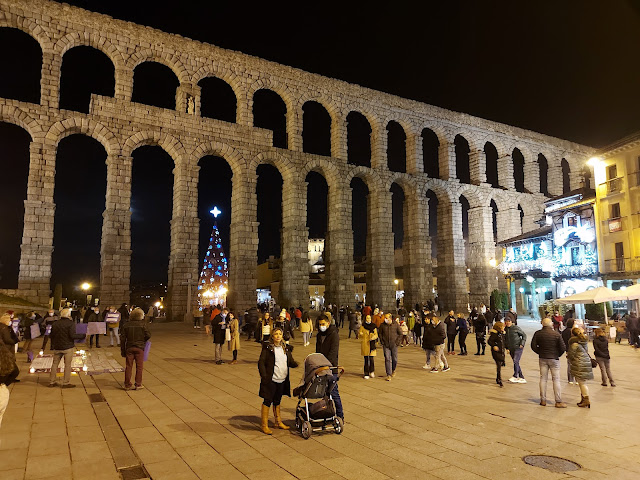 |
| Segovia is a beautiful stone city of Roman origin and Castilian aesthetic. |
 |
| The city was a favorite stop of the Castilian itinerant court. Many of the churches were built in the between the 14th and 16th centuries. |
 |
| We stayed in a former monastery. |
 |
| Nice hens |
 |
| Segovia's aqueduct is its most recognizable remnant of its Roman past. We ate at Meson de Candido, the bright building on the right, famous for its suckling pig. |
 |
| Good view! |
 |
| Castilian Soup |
 |
| Suckling pig |
 |
| Dessert! |
 |
| This is... unsettling. |
 |
| A church with a great weather-vane. |
 |
| Segovia Cathedral was built in the 16th century to separate the main cathedral from the castle. The previous cathedral has been destroyed in a rebellion when it was used to assault the castle. |
 |
| The Cathedral looks great at night! |
 |
| The inside's not bad either. |
 |
| I don't remember that from the bible. |
 |
| Interesting ceiling design |
 |
| The reliquary always gets the best ride. |
 |
| The Alcazar of Segovia was originally built as a residence for the monarchs of Castile after they conquered the Taifa of Toledo. |
 |
| The castle is fairly sumptuous. Each room is a period piece from a different monarchy, so it houses the best of each century's aesthetic in Castile. |
 |
| The Hall of the Galley |
 |
| Not every knight could pull off a hat like that. |
 |
| The Hall of Kings houses Philip II's statues of the kings and queens of Asturias, Leon and Castile. |
No comments:
Post a Comment